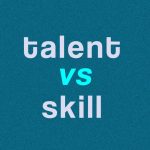Hybrid Learning: The Future of Workplace Training & Employee Development

The way we work has changed dramatically in the post-pandemic world. Remote, hybrid, and in-office work models have become the norm, but this shift isn’t just about where we work—it’s about how we learn too. As companies continue to embrace flexibility, workplace training must evolve alongside it. This is where hybrid learning comes in.
Hybrid learning is revolutionizing employee development by blending in-person and online training. It ensures businesses can upskill their workforce effectively—whether employees work from home, the office, or both. But what exactly is hybrid learning, and why is it the future of workplace training? Let’s dive in.
What Is Hybrid Learning?
Hybrid learning is a learning model that combines traditional, in-person training with digital learning. Unlike pure online courses, hybrid learning integrates face-to-face interactions with virtual elements, giving employees the best of both worlds.
This approach caters to different learning styles, offering flexibility and accessibility while ensuring high-quality engagement. Employees can attend live sessions in person or online, complete interactive digital modules, and participate in virtual discussions—all within the same learning program.
Hybrid Learning vs. Online & Blended Learning
It’s easy to confuse hybrid learning with online learning or blended learning, but there are key differences:
✅ Online learning is fully digital. All content, interactions, and assessments are delivered via an online platform. ✅ Hybrid learning combines live, in-person and virtual elements. Employees can attend some sessions face-to-face while completing others remotely. ✅ Blended learning mixes instructor-led training with self-paced online modules. It’s structured but allows employees to learn at their own convenience.
In a hybrid workplace, companies don’t have to choose just one method. A mix of learning models can support employee development based on the company’s needs and workforce structure.
How Hybrid Learning Fits in a Hybrid Workplace
As hybrid and remote work become the new standard, corporate learning strategies must adapt. A study by Gallup found that 54% of employees who can work remotely expect to split their time between home and the office, and 37% plan to work entirely from home.
For businesses, this means training must be accessible to all employees—regardless of location. Hybrid learning ensures that every team member receives the same quality of training, whether they’re in the office or logging in remotely.
A Real-World Example of Hybrid Learning
Imagine a company, TechStarters, that recently adopted a hybrid work model. Their employees are spread across different locations, with some working remotely and others coming into the office part-time.
TechStarters launches a cybersecurity training program using hybrid learning:
🔹 In-Person Workshops – Office-based employees attend hands-on training sessions to learn about cybersecurity best practices. 🔹 Online Modules – Remote employees complete the same training through an eLearning platform with video lectures, interactive quizzes, and virtual simulations. 🔹 Live Q&A Sessions – To ensure equal learning opportunities, all employees—whether in-person or online—can participate in real-time Q&A discussions.
This hybrid approach ensures every employee receives the same learning experience, creating a consistent and inclusive development process.
The Benefits of Hybrid Learning
Hybrid learning isn’t just convenient—it offers real advantages for both employees and businesses.
For Employees
✔ Greater Flexibility – Employees can choose to attend in-person sessions or complete training remotely, making it easier to balance work and learning. ✔ Enhanced Learning Experience – Combining live interactions with digital content accommodates different learning styles, improving engagement. ✔ Increased Accessibility – Remote employees or those with tight schedules still have equal access to professional development. ✔ Continuous Learning – Employees can revisit online materials anytime, ensuring long-term skill retention.
🔹 Expert Insight: L&D specialist Gary Cookson emphasizes that learning should be engaging, interactive, and delivered in small, digestible chunks—exactly what hybrid learning supports.
For Businesses & HR Teams
✔ Cost-Effective Training – Hybrid learning reduces travel and accommodation costs, and digital courses can be updated and reused over time. ✔ Scalability – Whether training 50 or 5,000 employees, hybrid learning can easily scale as the business grows. ✔ Higher Employee Engagement – Employees who have control over how they learn are more motivated and invested in their development. ✔ Data-Driven Insights – Learning platforms track progress, engagement, and performance, helping HR teams identify skills gaps and improve training strategies.
🔹 Expert Insight: Gary Cookson highlights that modern L&D is about facilitation, not just information delivery. Hybrid learning empowers employees to take charge of their own development, improving both learning outcomes and performance.
Final Thoughts: Hybrid Learning Is the Future
As companies continue to embrace hybrid work, traditional training methods are no longer enough. Hybrid learning is the next evolution—offering the flexibility, engagement, and accessibility today’s workforce demands.
🚀 Ready to future-proof your workplace training? Hybrid learning can help your team stay ahead.




















